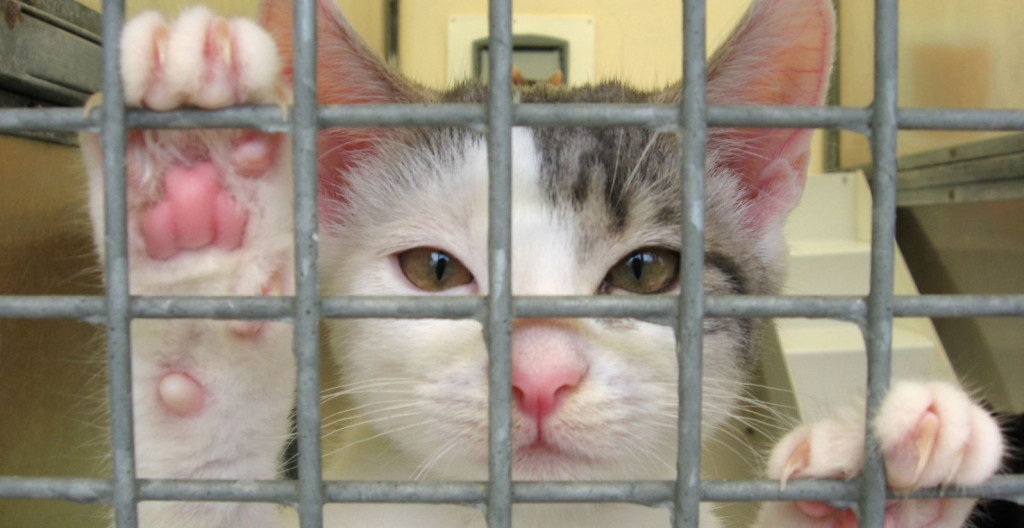And they didn’t get trapped, neutered, or released.

Yet another study has confirmed what those of us doing TNR and cat rescue have known for years: that TNR works to reduce intakes of community cats and thus killing at the local pound. A targeted TNR program in the zip code with the highest intake rates in a Florida jurisdiction led to a 66% decrease in shelter cat impoundment over two years (compared to a 12% decline in the non-target zip codes). At the end of the study period, the target areas had a 3.5-fold lower intake rate and 17.5-fold lower kill rate. Beyond the usual, the study shows the mechanisms why and, more importantly, how the shift in orientation from killing to education/rescue on the part of animal control officers reduces intake and killing across the board, too, including, interestingly, a reduced intake of dogs from such areas as well: “An unexpected phenomenon was a concurrent decrease in shelter dog intake from the target area during the 2-year study period.” Dog intake declined by more than a third in the target area but by less than one-tenth in the non-target area. How and why?
How TNR Reduces Intakes and Killing: The Obvious
- Community cats who are not social with humans do not enter the shelter where they all are killed after being classified as “unadoptable.” As I have long argued, for community cats who are not social with humans (“feral”), TNR is the functional equivalent of adoption. Sterilization isn’t the most important variable. The most important part of the TNR equation is the “R,” for release.
- The usual claim that the decrease intake is the result of “a decrease in kitten births via neutering.” This is intuitive, but the study did not break down intake rates at the shelter by age and I’ve reached out to the authors of the study for more information.
- TNR resulted in a “decreased [perceived] nuisance behavior associated with breeding and territorial defense.” The conclusion: “Many residents indicated that they enjoyed the cats, but they felt overrun with kittens, frustrated by noisy cat breeding behavior or concerned about aggression toward their own cats, problems that are resolved by sterilization.”
- The TNR program helped create a vibrant rescue network that placed friendly community cats through rescue groups, rather than having them impounded (and potentially killed) by the shelter.
How TNR Reduces Intakes and Killing of Cats AND Dogs: The Not So Obvious But Oh So Important
Why did the TNR program result not just in a 66% decline in cat intake, as would be expected, but a significant decline in intake of dogs who were not part of the program? While the authors opine that “the community education component” of the TNR project created what they called “a bystander effect that motivated [residents] to take action on behalf of all animals in their care,” the obvious mechanism was the policy shift and practices of animal control officers in the target area.
Instead of “responding to calls with offers of immediate impound” which is what they would have done in the past and continued to do in the non-target areas, they connected “residents with community resources to keep animals in place.” In other words, they went from rounding up and killing animals and presenting that course of action as acceptable and “humane,” to solving problems and educating the public.
As I have also long argued, intake and death rates are primarily determined by shelter policies. This study bears that out and shows that the rate of intake and killing is not just a function of what the public does or does not do, but is, in large part, directly in the control of shelter managers and staff and what they do or don’t do. In other words, shelters that are proactive, rather than passive, can help drive intakes and killing downward beyond a pet retention program in the shelter, working with rescue groups, adoption programs, and increasing reclaim rates (see also http://bit.ly/1050UPb). What ACOs do on the street and how they respond to calls and interact with the public can have a major impact on preventing intakes in the first place and helping keep animals with their responsible caretakers, too. In other words, their actions and attitudes influence the attitudes and actions of the people in the community. And when they provide the community with an alternative to impoundment and killing, those who might be inclined to defer to them as the “experts” on what is best for animals emulate their newer, more enlightened view.
The study, “Effect of high-impact targeted trap-neuter-return and adoption of community cats on cat intake to a shelter,” can be found here: http://bit.ly/1w17vdw
There is also an editorial about the study that accompanies it and notes that lethal methods “prove unsuccessful because of repopulation through breeding and migration” and debunks the notion that community cats are decimating so-called “native species.” The editorial can be found here: http://bit.ly/17ZF3On
————-
Have a comment? Join the discussion by clicking here.